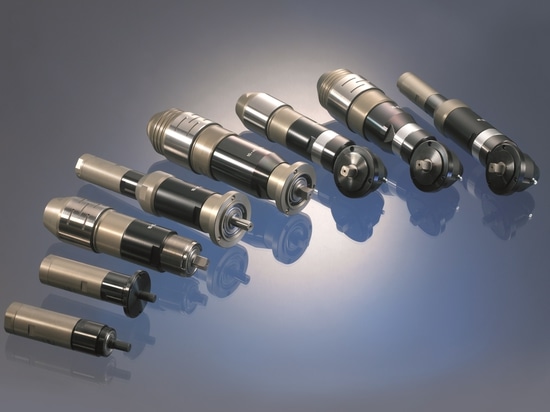
#Industry News
How to reduce downtime on your production site?
Planned or emergency downtime can be tedious and costly. Find out how the portable valve actuator makes these tasks easier and safer.
There are two main types of stoppages on production sites:
-Planned downtime (preventive maintenance)
-Emergency stoppages: Expensive Failures
How to reduce planned downtime (preventive maintenance)
Preventive maintenance involves maintenance and overhauls for organizational assets to keep them in optimal operating condition. Systematic inspections and observations enable problems to be detected and corrected before a fault occurs.
Even if production stoppages are planned, they are less expensive but remain complex and very expensive projects.
Implementation of a planned maintenance program becomes compulsory when the quality of production is affected by defective equipment, or when repair costs are too high due to unscheduled overhauls.
Planned maintenance aims at increasing the service life of equipment and tooling by anticipating potential breakdowns. Putting this process in place ensures reliable and efficient performance at your plant by ensuring that equipment does not break down when it is most needed. Wear on machines increases as time goes by: For this reason, preventive replacement is very effective, since it consists of intervening before a breakdown takes place rather than waiting for it to occur and undergoing all the potential consequences.
Moreover, even when downtimes are planned, no industrial site is immune to an unexpected situation that can delay the site’s reopening. One extra day is enough to generate losses of several million Euros.
Direct benefits of planned maintenance include:
-A reduction in breakdowns
-A reduction in downtimes
-Safety
-Increased service life for production assets
-An improvement in production.
Valve actuation assistance tools help you reduce your preventive maintenance time
The idea is to verify the efficiency of your maintenance service. To be efficient, this means optimizing the time spent in carrying out maintenance activities.
Preparing the tools, industrial supplies and items of equipment required for the intervention,
Movements from one intervention to another,
The time spent on carrying out the intervention
Today there are methods for operating valves that are capable of reducing their opening or closing times considerably. These methods also make it possible to protect the equipment, whilst preserving the physical integrity of the operators at the same time.
These new tools are relatively unknown to the general public and professionals. Easy to transport and install, they are polyvalent and do not represent important investments.
Mastering tools that help to handle valves greatly contributes to optimizing production stoppages and preventive maintenance.
It is therefore natural that reducing downtime is a decisive issue in guaranteeing the quality of finished products, delivery schedules or even customer satisfaction. What are the steps to take for eliminating unplanned downtime on your production lines? What tools can we offer to optimize production stoppages and preventive maintenance?
-For reducing costs
-For reducing health risks
-For reducing losses of containers
-For reducing times
-For improving public and customer relations
-Emergency stoppages: Expensive Failures
At first sight, it would seem that the so-called "emergency" stops most affect production line performance and therefore your plant’s productivity. This type of event mobilizes part of your maintenance team, which must find the cause of the stoppage and put the equipment back into running order as quickly as possible. During this time, productivity drops, which may your plant’s profitability.
The consequences of production stoppages for manufacturers are mostly linked to productivity and can generate heavy losses.
The cost of downtime can be assessed in terms of lost production, data, reputation, or even human life. The most common technique is to calculate the monetary value of these downtimes. How much money does your business lose per minute, per hour, per day or even longer, in equipment downtime?
Over and above the financial risk, the impossibility of delivering good-quality finished products on time can be problematic and lead to a loss of confidence on the part of customers.
The main effects of a production stoppage:
-A slow-down in operational performance: Repeated micro-stops and reductions in production rates
-An increase in waste due to non-conformities and products without any added value, etc.
-Operator stress, etc.
Even so, many industrial companies still do not calculate their downtime costs. In other words, few companies rely on quantifiable indicators and are aware of the costs of this or that dysfunction. And this is the case until they suffer from a breakdown and it is too late.
Portable valve actuators are effective for both types of stoppage:
-Saving time: Better productivity, especially during shutdowns
-Operator safety: The risks of occupational accidents and occupational diseases are reduced, and better working conditions improve employee satisfaction, which may well increase their productivity when managing shutdowns.
-Protection of materials and items of equipment: Operators are willing and able to carry out good, regular servicing on their installations by on-going maintenance, even on installations containing handwheels or valves that are difficult to access or which are not easy to operate manually. Torque can be adjusted or limited smoothly, without using “dangerous” methods such as crow-bars pushed through handwheels.
-Cost: Equipment service life can be increased by applying the exact torque required for each element, and precious time can be saved during maintenance operations or line stoppages during shutdowns.
-The inclusion of women: Our actuators enable female labour to be used for tasks reserved to men until now, because opening, rotation and closing forces are generated entirely by the portable rotary actuator.







